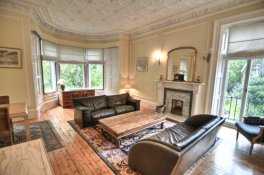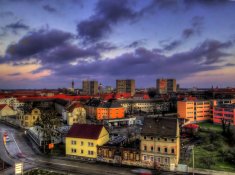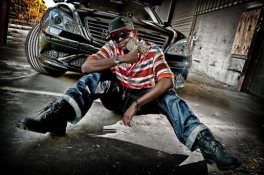blansky
Member
Back in my early days in portrait photography a photographer named Leon Kennamar developed a vignetter that fit in front of the lens that when handled properly would vignette the picture and darken or lighten the edges depending on what you wanted to do. Before that photographers would usually do what they did for years, which was burn or dodge the edges. Naturally some people screwed it up and didn’t control the f stop or distance from the lens and their picture looked like they were shot in a tunnel. But it was a tool that gave a “look”. (pic1)
When digital exploded on the scene there were a number of tools, plug-in and stand alones that gave certain looks. HDR (high dynamic range) was one which was loved by architectural photographers because they could photograph interiors with few lights or no lights and they wouldn’t blow out the windows and patio doors, or have dark corners in their pictures. (pic2)They were attempting to get away from the over produced look of the multi lit Architectural Digest stuff. So they essentially took three exposures, one for the highlights, one for the shadows and one intermediate and then blend them together. Of course HDR was abused to the extent that almost every outdoor scene we see while surfing the net, now has this unnatural looking syrupy surreal feel to it.(pic3) Another tool was the Lucas plug in that gave strange gritty looks to rather ordinary looking pictures.(pic3)
Now some people see this stuff and say ‘hey that’s cheating’ . But I wonder why they feel that a photographers choice’s on how he wants his pictures to look like is cheating.
There is a great photographer who shows in the gallery a lot who uses tintypes as a tool to achieve a hyper enhanced look to his pictures, that if they were shot with a Hasselblad say, would not appear this way. Exact same picture would look different with different camera/process. So much like HDR, the look is controlled by the process or the tools. Other photographers use various alt processes, and toning to produce different “looks”. Scratching the neg or messing with the edges are other tools which give a normal negative an “enhanced” look.
So why do you think we have a different standard in evaluating these pictures. Is it the proliferation of the digital ones which lessens its appeal. If we saw 20 tintypes a day of enhanced features, would we say that it was gimmicky? If we saw dozens of lith pictures a day would we say it’s gimmicky? If we rarely saw a HDR picture would we appreciate its look more? Because in all these cases, the subject is the same, the lighting is usually the same, the only difference is that a different “treatment” has been imposed on the image/picture giving it a different look.
Are all these tools not just ways for photographers to express themselves, set themselves apart from their peers and ways to explore different or hyper reality?
When digital exploded on the scene there were a number of tools, plug-in and stand alones that gave certain looks. HDR (high dynamic range) was one which was loved by architectural photographers because they could photograph interiors with few lights or no lights and they wouldn’t blow out the windows and patio doors, or have dark corners in their pictures. (pic2)They were attempting to get away from the over produced look of the multi lit Architectural Digest stuff. So they essentially took three exposures, one for the highlights, one for the shadows and one intermediate and then blend them together. Of course HDR was abused to the extent that almost every outdoor scene we see while surfing the net, now has this unnatural looking syrupy surreal feel to it.(pic3) Another tool was the Lucas plug in that gave strange gritty looks to rather ordinary looking pictures.(pic3)
Now some people see this stuff and say ‘hey that’s cheating’ . But I wonder why they feel that a photographers choice’s on how he wants his pictures to look like is cheating.
There is a great photographer who shows in the gallery a lot who uses tintypes as a tool to achieve a hyper enhanced look to his pictures, that if they were shot with a Hasselblad say, would not appear this way. Exact same picture would look different with different camera/process. So much like HDR, the look is controlled by the process or the tools. Other photographers use various alt processes, and toning to produce different “looks”. Scratching the neg or messing with the edges are other tools which give a normal negative an “enhanced” look.
So why do you think we have a different standard in evaluating these pictures. Is it the proliferation of the digital ones which lessens its appeal. If we saw 20 tintypes a day of enhanced features, would we say that it was gimmicky? If we saw dozens of lith pictures a day would we say it’s gimmicky? If we rarely saw a HDR picture would we appreciate its look more? Because in all these cases, the subject is the same, the lighting is usually the same, the only difference is that a different “treatment” has been imposed on the image/picture giving it a different look.
Are all these tools not just ways for photographers to express themselves, set themselves apart from their peers and ways to explore different or hyper reality?
Attachments
Last edited by a moderator:






